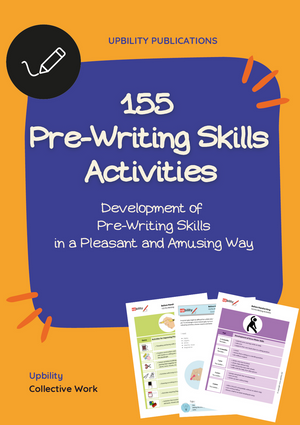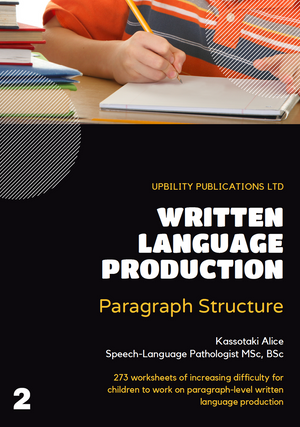
Building Descriptive Skills Step-by-Step
Based on: "Building Descriptive Skills Step-by-Step – Age: 4+."
Descriptive language skills
signify a person’s ability to describe something (an object, an animal, a place or a situation) using language (written or spoken language).
The description may be objective or subjective.
A description is considered objective if it is purely factual and does not contain any of the writer’s personal views, judgments and feelings.
A subjective description is factual as well. However it also sets out the writer’s personal thoughts, beliefs and feelings.

There are four main stages in developing a thorough description:
1st stage: approach the item described by focusing on its most prominent feature (categorisation). In other words, integrate the item described in the broader category it fits into (e.g. an apple is a fruit).
2nd stage: approach the item described by “zooming in” on specific details and trying to list its main distinctive features. At this stage, you need to come up with all the features you consider important (e.g. an apple is a fruit, it’s red, round etc.)
3rd stage: select and list further details regarding the item described. At this stage, you need to select a few more details regarding the item described and decide on how you will present them and integrate them with the rest of your description.
4th stage: after having selected the item’s distinctive features as well as the details you will focus on, you are ready to provide a comprehensive description of the item at hand.
1. Sensory Analysis:
Sensory analysis is an essential component of any description. It is the process of carefully considering all the sensory aspects that can be used to describe a person, a place, an object, an animal or a situation. It, therefore, involves thinking about what is described regarding the following aspects:
- Sight
- Hearing (sound)
- Touch
- Smell
- Taste
- Feelings

2. Organising the information collected for a description:
You can help your learners to organise the sensory information gathered for a description by using one of the suggested templates/guides that are included in this book. The structure of each of these templates/guides is based on the nature of the description at hand, in other words on whether the item described is an object, an animal, a person, a place or a situation. You will first need to teach your learners how to use the appropriate description template/guide and then start practicing with the pictures on the cards included in this book.
As soon as your learners feel confident enough to remember and use the structure of the selected template/guide by heart, you can stop using it and progress to more challenging tasks. For example, you can ask them to provide a description of an item using only the visual aid of the card described or no visual aid at all. There are 5 different templates/guides provided in this book, one for each level or thematic area.
3. Essential steps for helping your learners to build a well-structured and thorough description:
- Choose a topic (level, thematic area).
- Consider the key distinctive features of the item described (categorising).
- Structure the remaining information and components of the description with the help of the suitable template/guide.
- Make appropriate use of the present tense as well as sense verbs.
- Use descriptive words (descriptive adjectives, adverbs or adverbial expressions).
- Be precise and use sensory/descriptive words (adjectives).
- When describing a situation, present at least one logical inference that can be made from the picture described, using appropriate conjunctions and making sure that the inference or deduction presented is well integrated into the rest of the description.

Upbility.net has developed a comprehensive toolkit that brings together meaningful theory and enjoyable practice activities to help you guide your learners through every step of the process of building a description. Built around a set of colourful Picture Task Cards and focusing on objects, animals, people, places and situations that are central to children’s everyday life, this resource is ideal for young learners in preschool and primary school.
Alice Kassotaki - Speech Language Pathologist MSc, BSc
Suggested Articles by Upbility
- ADHD and Substance Abuse in Teenagers A Research
- Reading comprehension and autism
- 5 Tips For A Happy Summer For Kids With ADHD
- The Impacts Of Distance Learning A Review
Suggested Books on ADHD:


